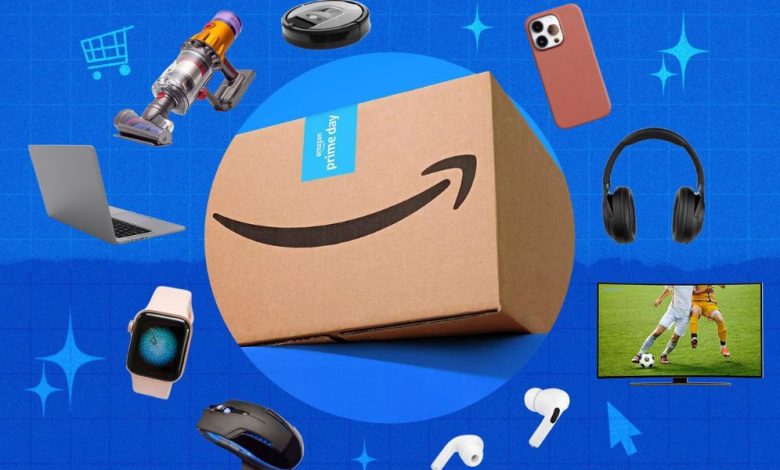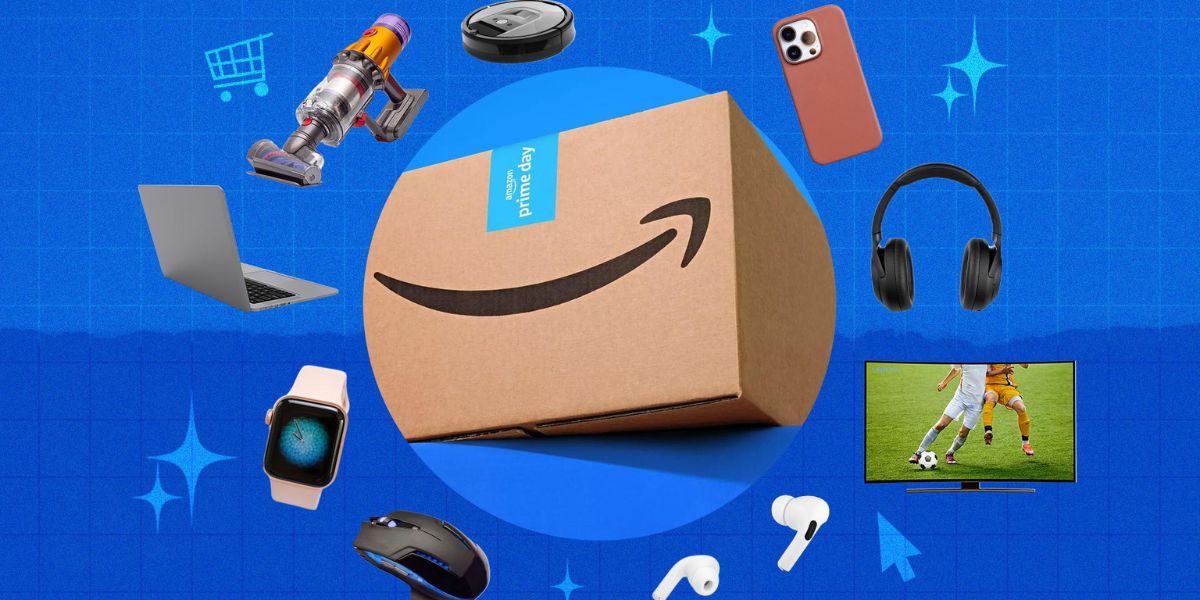Why was Amazon Prime Day Created?
Discover the Origins: The Inspiring Creation of Amazon Prime Day

Why Was Amazon Prime Day Created?

The Birth of a Retail Phenomenon
In the world of online shopping, few events are as eagerly anticipated as Amazon Prime Day. Since its inception, Prime Day has grown to become a global shopping extravaganza, drawing millions of shoppers from around the world to Amazon’s virtual aisles. But why was Amazon Prime Day created in the first place? To understand this, we need to delve into Amazon’s history, its business strategy, and the evolving landscape of e-commerce.
A Celebration of Amazon’s 20th Anniversary
Amazon Prime Day was first launched on July 15, 2015, as a way to commemorate Amazon’s 20th anniversary. The initial concept was simple: to create a shopping event exclusively for Amazon Prime members, offering deals and discounts that rivaled those of Black Friday and Cyber Monday. The goal was to celebrate two decades of Amazon’s innovation and customer service by giving back to its most loyal customers.
Strengthening Prime Membership
At its core, Amazon Prime Day was created to strengthen and expand the Amazon Prime membership base. Prime, which started as a subscription service offering free two-day shipping, has evolved into a comprehensive membership that includes access to streaming video, music, exclusive deals, and more. By offering exclusive deals to Prime members on Prime Day, Amazon incentivizes non-members to sign up for Prime, thereby increasing its subscriber base.
The strategy has proven to be remarkably effective. Each year, Amazon sees a significant spike in new Prime memberships around Prime Day. The allure of exclusive deals, combined with the multitude of benefits that come with a Prime membership, makes it an attractive proposition for consumers.
Driving Sales During a Summer Lull
Retailers often experience a sales slump during the summer months, as consumers typically spend less compared to the holiday season. Amazon Prime Day was strategically positioned in mid-July to combat this trend. By creating a major shopping event during a traditionally slow period, Amazon was able to boost its summer sales dramatically.
This timing not only helps Amazon maintain steady revenue throughout the year but also disrupts the typical retail calendar. Competitors have taken notice, and many have launched their own sales events to coincide with Prime Day, turning what was once a slow retail period into a bustling shopping season.
Competing with Major Retail Events
When Prime Day was first introduced, the primary retail events that dominated the calendar were Black Friday and Cyber Monday. By creating Prime Day, Amazon effectively added a third major shopping event to the calendar, one that it controlled entirely. This not only gave Amazon a competitive edge but also allowed it to set the terms of the event, from the deals offered to the duration of the sale.
Prime Day’s success has prompted other retailers to create their own summer sales events, further validating Amazon’s strategy. This competition benefits consumers, who now have more opportunities to find great deals throughout the year.
Showcasing Amazon’s Ecosystem
Amazon Prime Day also serves as a showcase for the company’s vast ecosystem of products and services. During the event, Amazon highlights its own devices, such as the Echo, Kindle, and Fire TV, often offering them at steep discounts. This not only drives sales of these devices but also encourages adoption of Amazon’s ecosystem, which includes Alexa, Prime Video, and Amazon Music.
By getting more of its devices into consumers’ hands, Amazon strengthens its position in the smart home market and boosts the usage of its services. This creates a virtuous cycle where increased adoption leads to more data and feedback, which Amazon can use to improve its products and services further.
Enhancing Customer Loyalty
Customer loyalty is a critical component of Amazon’s business model, and Prime Day is a powerful tool in enhancing it. By offering exclusive deals and benefits to Prime members, Amazon creates a sense of exclusivity and value. This not only encourages existing members to renew their subscriptions but also attracts new members.
Moreover, Prime Day deals often include discounts on everyday essentials, encouraging members to make repeat purchases throughout the year. This helps Amazon build long-term relationships with its customers, fostering loyalty and increasing the likelihood of continued business.
Data and Insights
Prime Day also provides Amazon with a treasure trove of data and insights. The massive volume of transactions that occur during the event allows Amazon to analyze purchasing behavior, preferences, and trends on a grand scale. This data is invaluable for fine-tuning marketing strategies, optimizing inventory management, and enhancing the overall customer experience.
The insights gained from Prime Day can also inform future product development and merchandising strategies. By understanding what products and deals resonate most with customers, Amazon can tailor its offerings to better meet consumer demand.
Driving Innovation and Efficiency
The logistical challenge of fulfilling millions of orders in a short period pushes Amazon to continually innovate and improve its operations. Prime Day acts as a stress test for Amazon’s logistics network, from its fulfillment centers to its delivery systems. Each year, the company uses the event to refine its processes, test new technologies, and improve efficiency.
This drive for operational excellence benefits Amazon year-round. Innovations and improvements made for Prime Day can be applied to the company’s everyday operations, enhancing its ability to deliver products quickly and efficiently.
Supporting Small Businesses
While Amazon itself garners much of the attention during Prime Day, the event also provides a significant boost to small and medium-sized businesses that sell on the platform. Amazon actively promotes these sellers during Prime Day, offering them the opportunity to reach a vast audience and increase their sales.
For many small businesses, Prime Day can be a game-changer, providing them with the exposure and sales volume they need to grow. Amazon’s support of these businesses aligns with its broader strategy of diversifying its marketplace and offering customers a wide range of products.
Adapting to Changing Consumer Behavior
Consumer behavior is constantly evolving, and Prime Day helps Amazon stay ahead of these changes. The event allows Amazon to experiment with new features, technologies, and marketing strategies in a real-world setting. For example, the integration of Alexa voice shopping and the expansion of same-day delivery options are innovations that have been influenced by Prime Day experiences.
By staying attuned to how consumers shop and what they value, Amazon can adapt its offerings to better meet customer needs. This adaptability is crucial in the fast-paced world of e-commerce, where consumer preferences can shift rapidly.
Global Expansion
What started as a celebration of Amazon’s 20th anniversary has grown into a global phenomenon. Prime Day is now celebrated in multiple countries, including the United States, Canada, the United Kingdom, Germany, France, Japan, and more. This global expansion reflects Amazon’s ambition to become the world’s most customer-centric company.
By extending Prime Day to international markets, Amazon not only increases its global sales but also strengthens its brand presence worldwide. The event helps Amazon attract new customers in different regions and encourages existing customers to explore a broader range of products.
Conclusion
Amazon Prime Day was created as a multifaceted strategy to celebrate the company’s anniversary, strengthen its Prime membership base, boost sales during a slow retail period, and showcase its ecosystem of products and services. Over the years, it has evolved into a significant event in the retail calendar, benefiting consumers, small businesses, and Amazon alike. Just as we know Why is it Important to Confirm the Chandipura Virus in Samples?
Prime Day’s success is a testament to Amazon’s ability to innovate and adapt to changing market dynamics. It highlights the company’s commitment to providing value to its customers while driving growth and efficiency within its operations. As Prime Day continues to grow and evolve, it will undoubtedly remain a cornerstone of Amazon’s strategy, shaping the future of retail and e-commerce.




